am erinca
RHAPSODY
SATURDAY, SEPTEMBER 21, 2024 7 PM
DECC SYMPHONY HALL, ALLETE STAGE
DIRK MEYER, CONDUCTOR
JEFFREY BIEGEL, PIANO
American Suite
Andante con moto
Allegro
Moderato (alla Pollacca)
Andante
Allegro
BOYER
Rhapsody in Red, White & Blue
Jeffrey Biegel, piano
*Minnesota Premiere
Rhapsody in Blue
Jeffrey Biegel, piano
CONCERT SPONSOR:

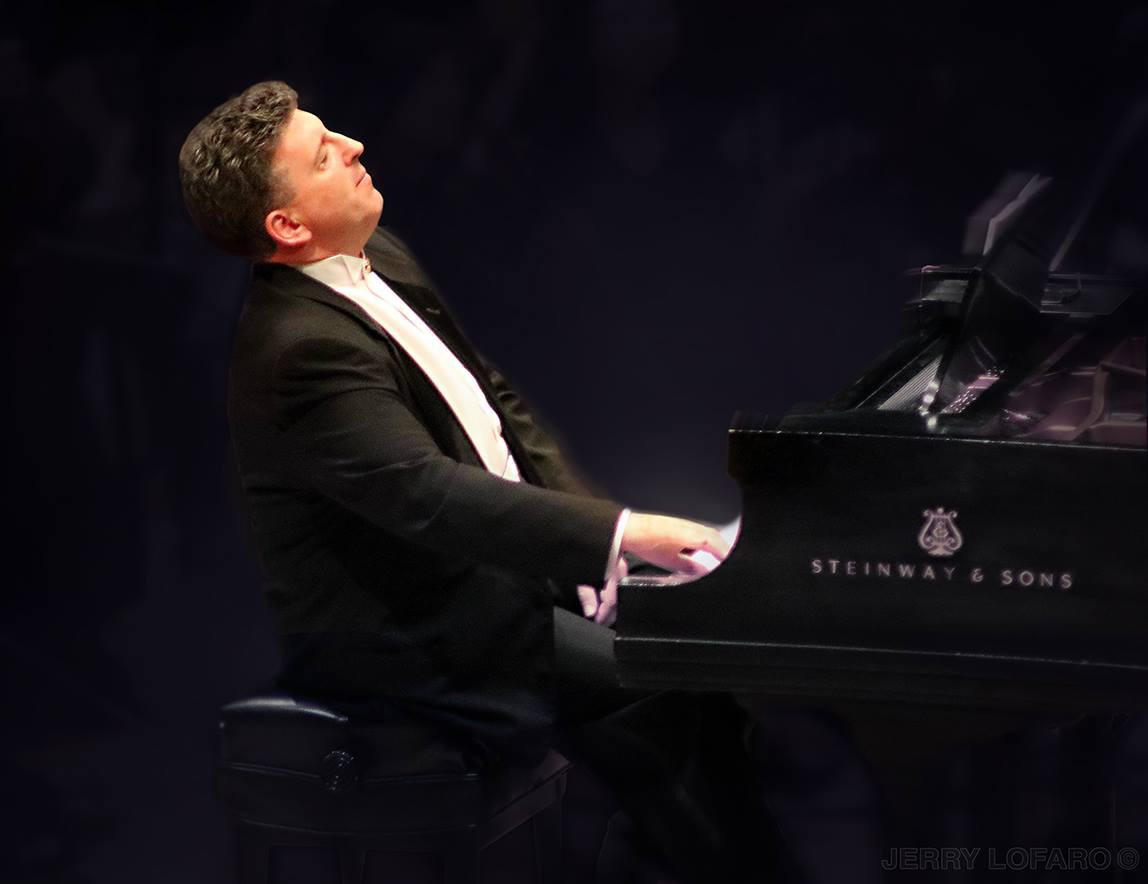
JEFFREY BIEGEL
In an age when many artists’ fortunes begin with a meteoric ascent and quickly cool with the inexorable free-fall, pianist Jeffrey Biegel has managed to buck that trend, fashioning a career of steady success studded with concerts at major venues with major orchestras, a Grammy winning recording, and more than 25 commissioned works by living composers. His life takes its roots from age three, barely able to hear nor speak, until corrected by surgery. The ‘reverse Beethoven’ phenomenon explains his lifelong commitment to music, having heard only vibrations in his formative years. The pandemic year of 2020 focused on composing original “Waltzes of Hope”, “Sonatina”, and “Three Reflections: JFK, RBG and MLK” for solo piano, and for piano and orchestra, orchestrations by Harrison Sheckler. 2021 saw the world premieres of his “Reflection of Justice: An Ode to Ruth Bader Ginsburg” with the Dallas Symphony Orchestra, and Ellen Taaffe Zwilich’s “Remembering Ruth Bader Ginsburg” for mezzo-soprano, piano and orchestra in tribute to the late Supreme Court Justice Ruth Bader Ginsburg, with mezzo-soprano Denyce Graves. Also, the world premiere of Ellen Taaffe Zwilich’s “Shadows” newly arranged for piano and seven players with the Idaho State Civic Symphony. In 2022, he premiered Jim Stephenson’s ‘Piano Concerto’, Daniel Perttu’s ‘A Planets Odyssey’ for piano and orchestra, Farhad Poupel’s “The Legend of Bijan and Manijeh” for piano, orchestra and chorus, his own concerto, ‘Three Reflections: Freedom (JFK), Justice (RBG) Equality (MLK)’, and Christopher Marshall’s ‘Thanksgiving Variations on “We Gather Together”’. For 2023, The 50-state Rhapsody National Initiative begins, with the Utah Symphony leading a three-season effort with Peter Boyer’s “Rhapsody in Red, White & Blue”, with a world premiere recording of the new Rhapsody with Peter Boyer conducting the London Symphony Orchestra for a February 2024 Naxos digital release. Jake Runestad’s “Dreams of the Fallen” with True Concord Voices and Orchestra was released August 16 2024 on Reference Recordings, depicting the lives of veterans returning from war. The 2024-25 season foresees a new work for piano and orchestra by Adolphus Hailstork with the Pacific Symphony, Carl St. Clair conducting, and Grammy winning singer/songwriter, Melissa Manchester’s ‘AWAKE’ for piano and orchestra (premiere tba).
Considered the most prolific artist of his generation, Moravian College in Bethlehem, PA, conferred the Honorary Degree of Doctor of Humane Letters upon Mr. Biegel in 2015, for his achievements in performance, recordings, chamber music, champion of new music, composer, arranger and educator. In 2019, Kenneth Fuchs’s “Piano Concerto: ‘Spiritualist’” with the London Symphony Orchestra led by JoAnn Falletta received a Grammy Award for Best Classical Compendium, featuring Mr. Biegel as its soloist. In 2019, the first digital recordings were released on Mr. Biegel’s Naturally Sharp label: “Cyberecital: An Historic Recording”, “A Pianist’s Journey”, and the September 2021 release of George Gershwin’s “Rhapsody in Blue” 1924 version with the Adrian Symphony Orchestra, Bruce Kiesling conducting.
Mr. Biegel created the first largest consortium of orchestras in 1998 for Ellen Taaffe Zwilich’s ‘Millennium Fantasy’ premiered with the Cincinnati Symphony Orchestra in 2000, followed with Charles Strouse’s ‘Concerto America’ with the Boston Pops, Lowell Liebermann’s ‘Concerto no. 3’ with the Milwaukee Symphony Orchestra, William Bolcom’s ‘Prometheus’ for piano, orchestra and chorus, with the Pacific Symphony and Pacific Chorale, Richard Danielpour’s ‘Mirrors’ with the Pacific Symphony, Ellen Taaffe Zwilich’s ‘Shadows’ with the Louisiana Philharmonic Orchestra, Jake Runestad’s ‘Dreams of the Fallen’ with the Louisiana Philharmonic Orchestra and Symphony Chorus of New Orleans, Lucas Richman’s ‘Piano Concerto: In Truth’ with the Knoxville Symphony Orchestra, recorded with the Pittsburgh Symphony Orchestra, and Kenneth Fuchs’s “Piano Concerto: ‘Spiritualist’” with the Springfield Symphony Orchestra (MA). He also premiered and recorded Giovanni Allevi’s ‘Concerto for Piano and Orchestra’ and commissioned Christopher Theofanidis’s “Concerto no. 2 for Piano and Orchestra” with the Harrisburg Symphony Orchestra, the “Peanuts Concerto” by Dick Tunney, based on music by Vince Guaraldi, Jimmy Webb’s ‘Nocturne for Piano and Orchestra’ and, PDQ Bach’s ‘Concerto for Simply Grand Piano and Orchestra’ by Peter Schickele with the Colorado Symphony Orchestra. Bringing new music to youth orchestras saw the world premiere of Daniel Dorff’s ‘Piano Concerto’ with the Etowah Youth Orchestra, conducted by Michael Gagliardo.
He studied at The Juilliard School with Adele Marcus, herself a pupil of Josef Lhevinne and Artur Schnabel, and is currently on faculty at the Conservatory of Music at Brooklyn College.
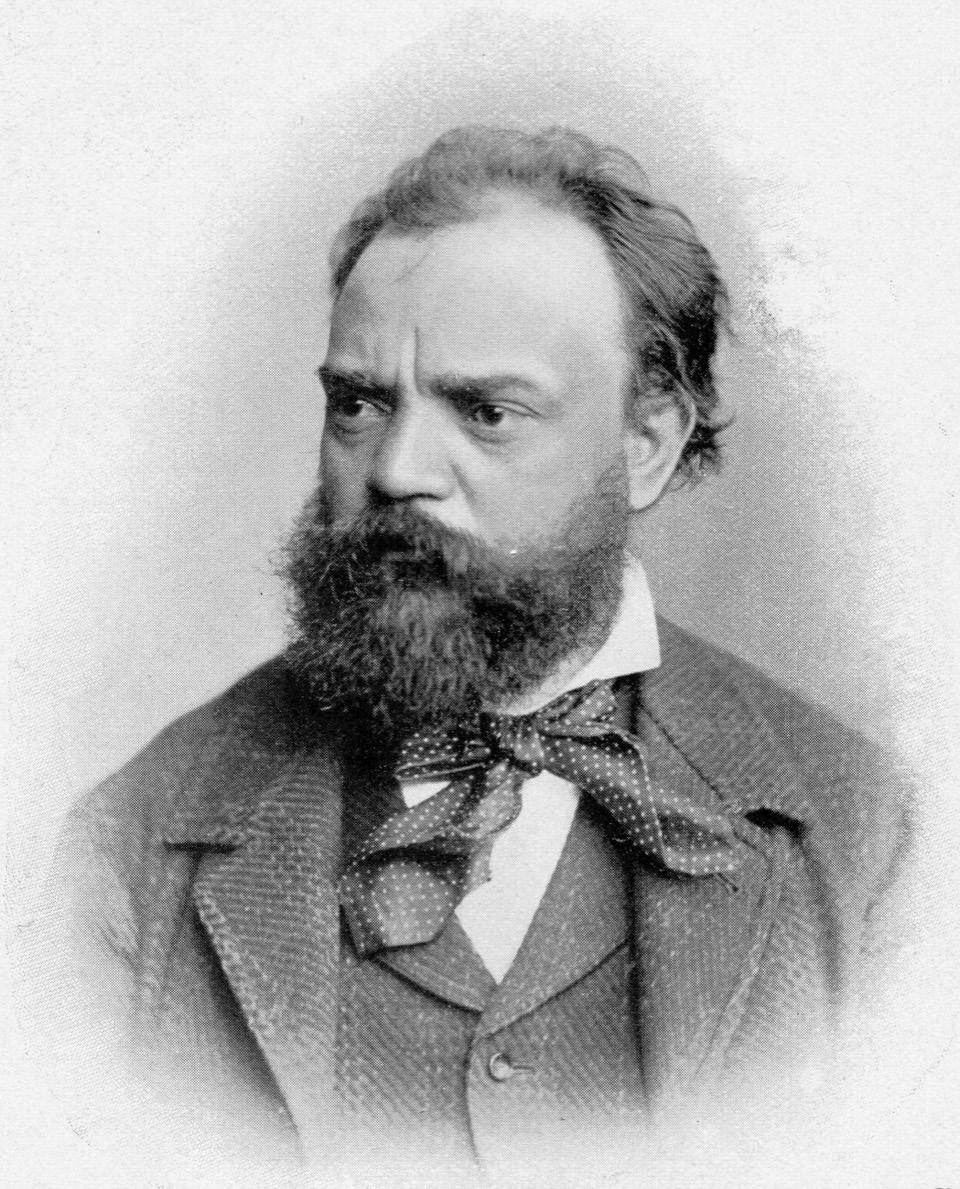
ANTONÍN DVOŘÁK
Suite in A major, Op. 98b, B. 190 American
Antonín Dvořák
BORN:September 8, 1841, in Nelahozeves, near Prague, Czech Republic (then Bohemia)
DIED: May 1, 1904, in Prague
WORK COMPOSED: 1894 for piano; 1895 for orchestra
WORLD PREMIERE: 1894 (piano version); 1910 (orchestra version)
PERFORMANCE HISTORY: Dvořák’s American Suite is being performed for the first time by the DSSO this evening.
INSTRUMENTATION: Two flutes and piccolo, two oboes, two clarinets, two bassoons and contrabassoon, four horns, two trumpets, three trombones, tuba, timpani, percussion (bass drum, cymbals, triangle) and strings.
DURATION : 19 minutes
Whenever the American Sound is discussed the names that first come to mind are Gershwin, Copland and Bernstein. Rarely would anyone consider Dvořák among that list. We think of those first three because they are all products of America’s modern era which has also defined the American image. Dvořák came to the United States in the fall of 1892 to be the artistic director and professor of composition at the National Conservatory of Music in New York City. During his time in the United States, Dvořák composed a
number of his later works and even gave a few of them a subtitle alluding to America: Symphony No. 9 From the New World; String Quartet in F major The American; and this Suite in A major American.
Jeanette Thurber, president of the National Conservatory of Music, had long dreamt of the creation of an American style of art music and because of Dvořák’s use of folk music, it was her hope that he would pave the way. Dvořák took advantage of spending time in other parts of the United States, most significantly in Spillville, Iowa during his summer vacation of 1893 (the village of Spillville had a majority Czech population). His experience on the Iowa prairie, “endless acres of wood and meadow,” was completely opposite to life in New York City. He wrote that life in Iowa is “very wild here, and sometimes sad - sad to despair.” Imagine leaving behind family and friends, along with established villages for a new life in a strange, new land. We have to remember that although this was nearly the 20th century, life in rural Iowa was still difficult and most likely many longed for their homeland.
Dvořák composed the American Suite for piano in New York between February 19 and March 1, 1894. It received its world premiere shortly afterwards. Dvořák and his family spent that summer’s holiday in Bohemia and returned to New York in October. He began to orchestrate the American Suite in January 1895, but it was not performed publicly until 1910, six years after his death. The Suite may be considered Dvořák’s farewell to America; instead of an intentional use of folk melodies we detect his expression of the sounds and experiences of his time in the New World. The unmistakable use of Bohemian rhythms and sounds juxtaposed with the American influence makes us think of the Czech emigrants creating a new life while keeping their culture and traditions alive.
PETER BOYER
Rhapsody in Red, White and Blue PETER BOYER
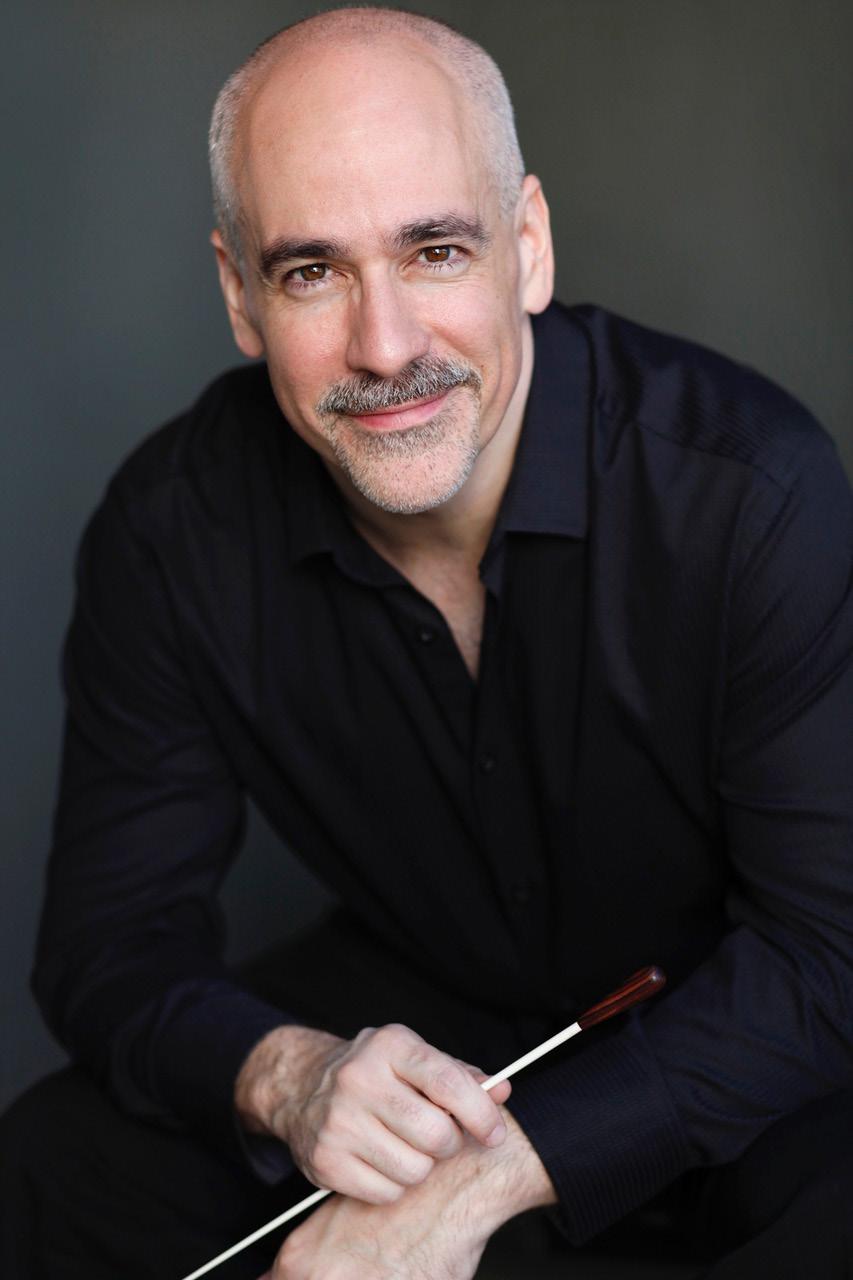
BORN: February 10, 1970, in Providence, Rhode Island
WORK COMPOSED: 2023
WORLD PREMIERE: June 30, 2023, Deer Valley Snow Park Amphitheater, Park City, Utah; soloist Jeffrey Biegel, Utah Symphony, Benjamin Manis conducting
PERFORMANCE HISTORY: Tonight’s performance of Rhapsody in Red, White and Blue marks the first DSSO performance of any music by Peter Boyer.
INSTRUMENTATION: Two flutes and piccolo (optional), two oboes and English horn (optional), two clarinets and bass clarinet (optional), two bassoons and contrabassoon (optional), four horns, three trumpets, three trombones, tuba, timpani, percussion (glockenspiel, chimes, xylophone, vibraphone, triangle, tambourine, hi-hat, suspended cymbal, snare drum, bass drum), strings and solo piano
DURATION : 15 minutes
Peter Boyer is one of the most frequently performed American orchestral composers of his generation. His works have received nearly 700
public performances by more than 250 orchestras, and tens of thousands of broadcasts by classical radio stations around the United States and abroad.
The composer describes his composition:
This work was conceived by the prodigious American pianist Jeffrey Biegel, who approached me in early 2020 with his ambitious idea for a project to celebrate the centennial of George Gershwin’s Rhapsody in Blue, in February 2024. I hesitated before accepting the commission, knowing that the piece I was being asked to compose would be performed repeatedly alongside Rhapsody in Blue – one of the most iconic and beloved works of American music. I wondered how any piece of mine could withstand the inevitable comparisons to the Gershwin work – especially with Jeffrey’s chosen title, Rhapsody in Red, White & Blue. However, he is as persuasive as he is gifted, and so I accepted the commission.
Like the Gershwin work, my Rhapsody is in a single long multi-sectional movement. As Gershwin did a century ago, I have attempted to capture a sense of American energy and optimism in much of this music. Though my musical style typically does not employ any jazz elements, in this work it seemed appropriate to include some allusions to a 1920s, “quasi-Gershwin” style. There is one section of the work, largely pastiche, which does this, in the form of a “bluesy scherzo.” The slow, lyrical section of the work, coming after its midpoint, might be heard as both an allusion to America’s wide-open spaces, and to my personal belief in the country’s promise, despite its many challenges.
At its premiere the new work received a prolonged standing ovation from an audience numbering over 3,000, which was a joy to experience. That performance launched the “Rhapsody National Initiative,” a remarkably ambitious endeavor created by Jeffrey, which will see him performing the work with at least one orchestra in every one of the 50 United States by summer 2026. As of this writing (December 2023), a total of 54 orchestras in all 50 states have committed to this project, a group which, to my knowledge, is unprecedented in its scope for a new piano and orchestra work.
Tonight’s performance marks the Minnesota premiere of Boyer’s Rhapsody in Red, White and Blue.
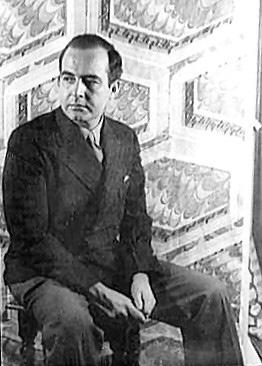
Symphony in One Movement, op. 9 SAMUEL BARBER
BORN: March 9, 1910, in West Chester, Pennsylvania
DIED: January 23, 1981, in New York City, NY
WORK COMPOSED: 1935-36
WORLD PREMIERE: December 13, 1936, in Rome, Italy; Philharmonic Augusteo Orchestra, Bernardino Molinari conducting
PERFORMANCE HISTORY: Barber’s Symphony No. 1 was previously played by the Orchestra in 1966, 1982 and on May 3, 2008.
INSTRUMENTATION: Three flutes (3rd doubles piccolo), two oboes and English horn, two clarinets and bass clarinet, two bassoons and contrabassoon, four horns, three trumpets, three trombones, tuba, timpani, percussion (bass drum, cymbals), harp and strings.
DURATION : 21 minutes
In October 1935, Samuel Barber arrived in Rome for a two-year residency at the American Academy, part of the American Prix de Rome award he won earlier that year in May. In his luggage he packed preliminary sketches for “an orchestra piece of ambitious tendencies.” After traveling around Europe and spending months writing other music, he completed his new, ambitious orchestral work Symphony No. 1 on February 24, 1936, during a visit to the French Riviera. He dedicated it to his long-time companion Gian Carlo Menotti (19112007).
The one-movement symphony is modeled after Sibelius’ Symphony No. 7 and is divided into four sections: Allegro ma non troppo - Allegro moltoAndante tranquillo - Con moto. In the program notes for its premiere in New York Barber explained:
The form of my Symphony in One Movement is a synthetic treatment of the four-movement classical symphony. It is based on three themes of the initial Allegro non troppo… The Allegro ma non troppo opens with the usual exposition of a main theme, a more lyrical second theme, and a closing theme. After a brief development of the three themes… the first theme… forms the basis of a scherzo section. The second theme (oboe over muted strings) then appears… in an extended Andante tranquillo. An intense crescendo introduces the finale, which is a short passacaglia based on the first theme (introduced by the low strings), over which, together with figures from other themes, the closing theme is woven, thus serving as a recapitulation for the entire symphony.
Barber was not wrong in describing the work as having ambitious tendencies! The immediate impact is tremendous; the resemblance to the music of Sibelius and his use of orchestral timbres is remarkable considering that he was only 25 years old at its completion.
At its premiere in Rome the Italian critics thought it “too dark-toned, too Nordic and Sibelian.” The critics were more favorable when the Cleveland Orchestra, conducted by Rudolf Ringwall, gave it its American premiere on January 21 and 23, 1937. Barber’s Symphony No. 1 was also positively received at its premiere in London and New York. In the summer of 1937, it became the first work written by an American composer to be presented at the prestigious Salzburg Festival.
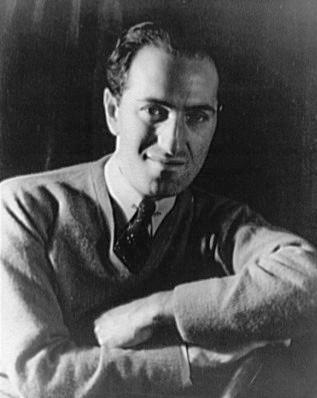
Rhapsody in Blue GEORGE GERSHWIN
BORN: September 26, 1898, in New York City, NY
DIED: July 11, 1937, in Hollywood, California
WORK COMPOSED: 1924
WORLD PREMIERE: February 12, 1924, Aeolian Hall in New York City; Paul Whiteman and his Palais Royal Orchestra with the composer as soloist PERFORMANCE HISTORY: Gershwin’s Rhapsody in Blue was also presented by DSSO in 1934 (with piano soloist Ramona Gerhard), in 1940 (with Alec Templeton), 1948 (Richard TetleyKardos),1959 (Jesus Maria Sanroma), September 20, 2014 (John Novacek). On the Pops Series it was played in 1976 (with Phillip Clark), 1988 (Thomas Wegren), 1990 (Indrek Laul), and on February 8, 1997 (Beth Gilbert).
INSTRUMENTATION: Two flutes, two oboes, two clarinets and bass clarinet, two bassoons, three horns, three trumpets, three trombones, tuba, three optional saxophones (two alto, tenor), optional banjo, timpani, percussion (snare drum, suspended cymbal, cymbals, glockenspiel, triangle, bass drum, tam-tam), strings and solo piano.
DURATION : 17 minutes
Late on the evening of January 3, 1924, Gershwin’s brother, Ira, was reading the next day’s edition of the New York Tribune while George and Buddy De Sylva were playing billiards at the Ambassador Billiard Parlor on Broadway and 52nd Street in Manhattan. The article Ira was reading “What Is American Music?”
discussed an upcoming concert the next month by Paul Whiteman. What caught Ira’s attention was the last paragraph claiming, “George Gershwin is at work on a jazz concerto, Irving Berlin is writing a syncopated tone poem, and Victor Herbert is working on an American suite.” This was news to both brothers. A phone call to Whiteman the next morning ended with George being persuaded to compose the piece.
Gershwin began working on the Rhapsody on January 7, with the ideas coming to him on a train journey to Boston as he told his biographer, Isaac Goldberg, in 1931:
It was on the train, with its steely rhythms, its rattle-ty bang, that is so often so stimulating to a composer – I frequently hear music in the very heart of the noise.... And there I suddenly heard, and even saw on paper – the complete construction of the Rhapsody, from beginning to end. No new themes came to me, but I worked on the thematic material already in my mind and tried to conceive the composition as a whole. I heard it as a sort of musical kaleidoscope of America, of our vast melting pot, of our unduplicated national pep, of our metropolitan madness. By the time I reached Boston I had a definite plot of the piece, as distinguished from its actual substance.
Gershwin titled the work American Rhapsody while he was composing it. Ira suggested Rhapsody in Blue after visiting an exhibition of James McNeill Whistler paintings, which had titles such as Nocturne in Black and Gold: The Falling Rocket and Arrangement in Grey and Black (better known as Whistler’s Mother). Gershwin completed the composition on February 3 and handed it over to Whiteman’s arranger Ferde Grofé (1892-1972) for orchestration. Grofé finished the orchestration the next day.
Deciding to keep his options open and allow for improvisation, Gershwin had Grofé write into Whiteman’s score “Wait for nod” as cues for when to bring in the orchestra. Gershwin did not write out the solo piano part until after the premiere. He acknowledged that Grofé was responsible for the critics’ praise of the orchestral color and the piece’s success. In 1938 Grofé confirmed that Gershwin did not have sufficient knowledge of orchestration in 1924. The original orchestration was for 23 musicians and after the premiere Grofé made new orchestrations in 1926 and 1942, each time for larger orchestras.
Program notes by Vincent Osborn © 2024
